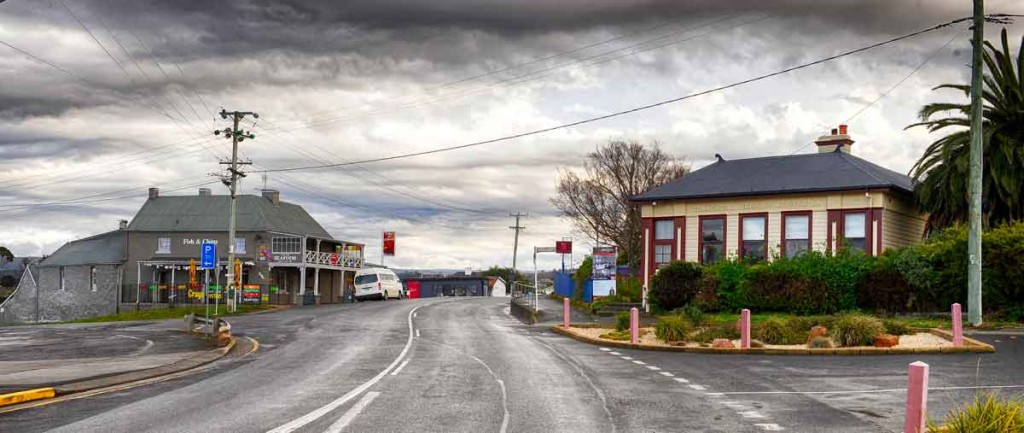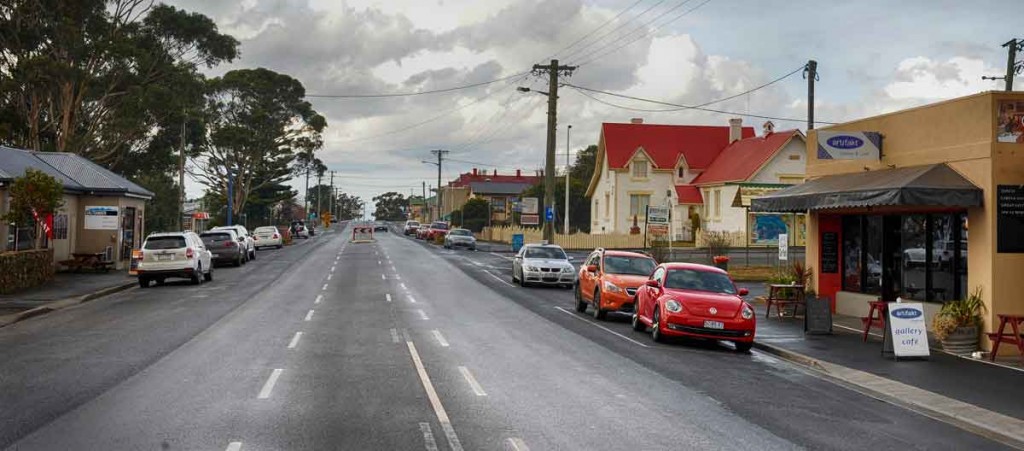Swansea has something that few of Tasmania’s other historic towns have: It is located by the sea, with stunning beaches and great opportunities for fishing. This little village, home to about 600 people, is also the gateway to the Freycinet National Park and the breathtaking Wineglass Bay.
Located about halfway along Oyster Bay on the East Coast of Tasmania, Swansea is easy to reach whether you’re driving from Hobart or from Launceston. From Hobart, the more direct route is simply to take the A6, also called the Tasman Highway, about 135 km in a north-easterly direction. Alternatively, you can take National Highway 1, the Midland Highway, to Campbell Town and from there, drive east along the B34, the Lake Leake Highway. From Launceston, you also need to drive to Campbell Town and then along the B34. The distance is about 135 km in total.
The original inhabitants of the area that became Swansea were the Paredarerme, also known as the Oyster Bay tribe. The tribe consisted of several bands and among those known to have lived in the North Oyster Bay and Schouten Passage areas were the Loontitetermairrelehoinner and the Toorernomairremener. In 1789, Captain John Henry Cox sailed his brig, the Mercury, up the coast and through what became known as the Mercury Passage, which separates Maria Island from the mainland. He then arrived in a vast bay that he named Oyster Bay.
In 1821, a Welsh settler named George Meredith received a grant to farm in the area and moved in along with two tenant farmers, who were also Welsh. They named the settlement Waterloo Point. They soon set up a tannery and a mill along the Meredith River as well as several whaling stations in the area. They even had a shipyard where they built trading vessels.
Meredith and his family first lived in a turf-and-timber hut at Redbanks on the river’s south bank. In 1825, their homestead was raided by Mathew Brady, the notorious bushranger. Even though the stolen goods were recovered, a servant was taken hostage and then killed. In about 1827 the family moved to a more spacious home further inland and in 1837 they moved to Cambria, a mansion built near their original home. Cambria still stands and is a private home.
Waterloo Point really started to grow in 1827, when a military outpost was established here and convicts started building a better infrastructure, among them convict roads and a bridge that still exists. In the early 1830s the town got a post office and in 1838 Morris’ General Store followed. At the time the store only had one storey but over time two more were added. The store not only still stands but still operates as a general store.
Down the street from Morris’ General Store is Schouten House, which in 1845 was a wedding gift to Theresa Champion from her father William. The building became the Swansea Inn and part of it was even used as a brewery. Over the years it has been used as a school, as a private home and as doctors’ offices but today it is a Bed &Breakfast.
Another historic mansion that now operates as a B&B is Meredith House in Noyes Street. It was built in 1853 for George Meredith’s son Charles, who became a prominent Tasmanian politician. Charles wife was Louisa Anne Meredith, the renowned writer and artist.
In a nod to its Welsh origins, in 1850 the town was renamed Swansea. A decade later it became the centre for the Glemorgan municipality, Tasmania’s first rural municipality, and a municipal office and court house were built. Another structure dating from 1860 is a combined school and residence building that now houses the fascinating East Coast Heritage Museum. Here you can pick up a heritage booklet of the town. The All Saints Church dates from 1871, while the Swansea Bark Mill was built in 1885.
Today there are several wineries in the area and the local beaches are perfect for swimming, fishing and long walks. Along the way you may spot seals, dolphins and whales or even the world’s smallest penguin species, the aptly named ‘Little Penguin’.




